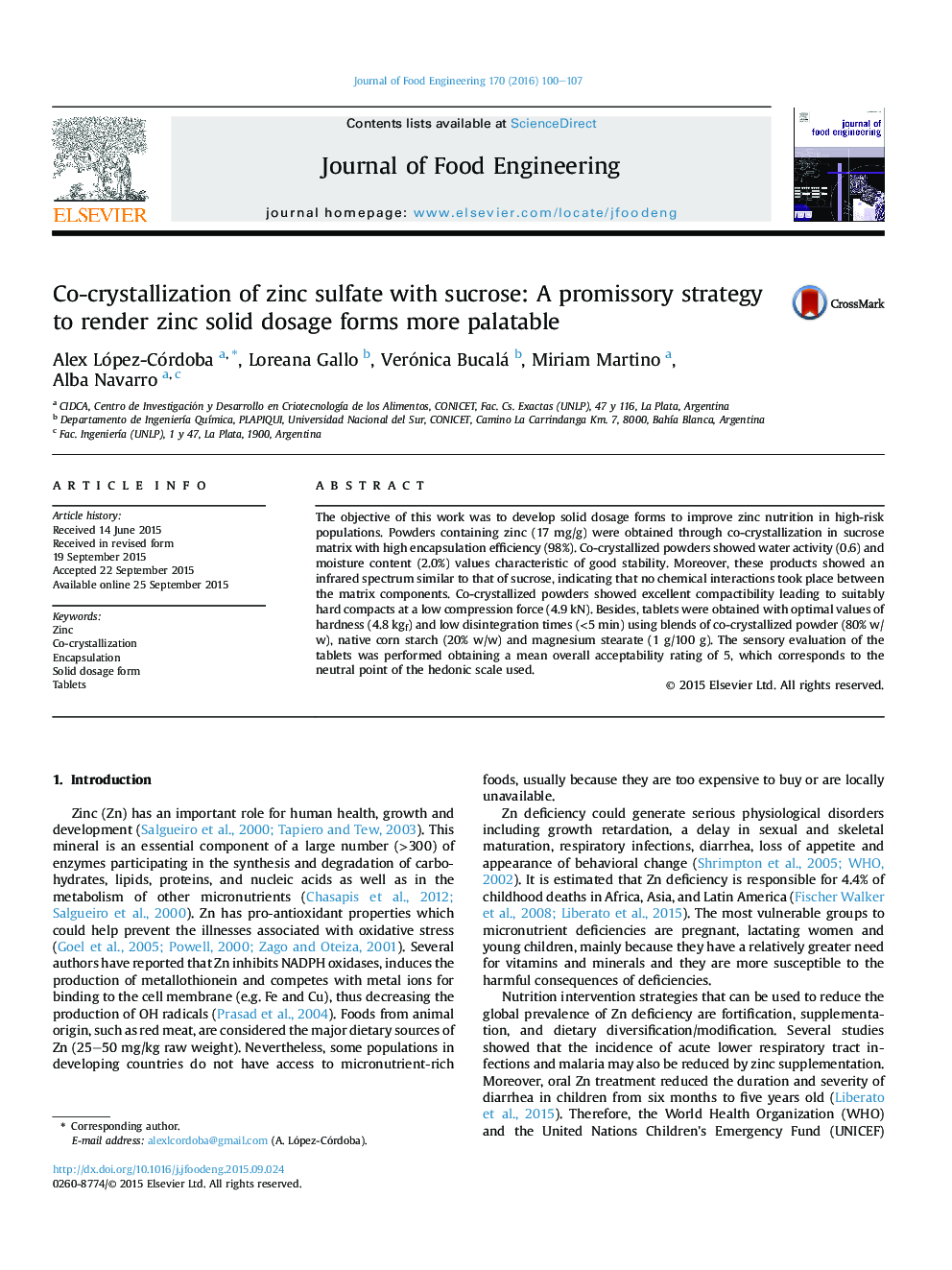| Article ID | Journal | Published Year | Pages | File Type |
|---|---|---|---|---|
| 222826 | Journal of Food Engineering | 2016 | 8 Pages |
•Co-crystallization with sucrose was used as an encapsulation strategy of zinc.•Co-crystallized products showed excellent properties for direct compression.•Tablets with good physicochemical and improved sensory properties were obtained.•The developed dosage forms can be used to meet the Zn requirements of at risk populations.
The objective of this work was to develop solid dosage forms to improve zinc nutrition in high-risk populations. Powders containing zinc (17 mg/g) were obtained through co-crystallization in sucrose matrix with high encapsulation efficiency (98%). Co-crystallized powders showed water activity (0.6) and moisture content (2.0%) values characteristic of good stability. Moreover, these products showed an infrared spectrum similar to that of sucrose, indicating that no chemical interactions took place between the matrix components. Co-crystallized powders showed excellent compactibility leading to suitably hard compacts at a low compression force (4.9 kN). Besides, tablets were obtained with optimal values of hardness (4.8 kgf) and low disintegration times (<5 min) using blends of co-crystallized powder (80% w/w), native corn starch (20% w/w) and magnesium stearate (1 g/100 g). The sensory evaluation of the tablets was performed obtaining a mean overall acceptability rating of 5, which corresponds to the neutral point of the hedonic scale used.
